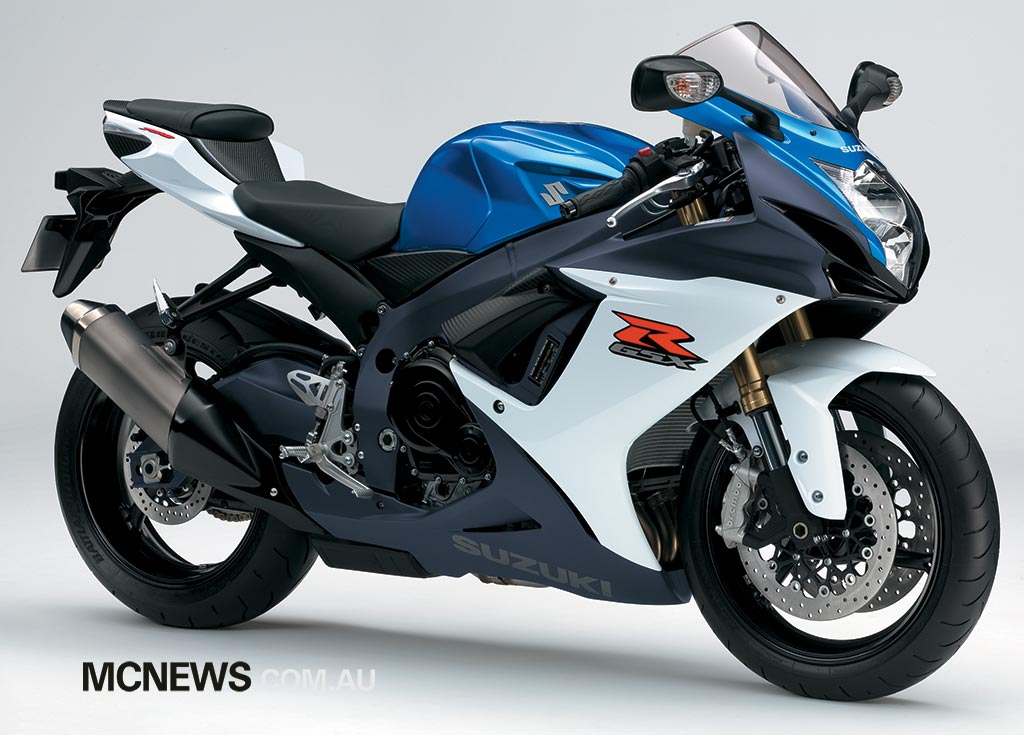Suzuki GSX-R750 Road Test
By Trevor Hedge
In 1985 Suzuki shocked the sportsbike world with the release of the GSX-R750. Derived from experienced earned through Suzuki’s successful World Endurance campaigns, the GSX-R750 was the first true race replica motorcycle from a Japanese factory.
Aerodynamic, light and powerful the GSX-R was the forefather of modern motorcycling and unlike the Europeans; Suzuki proved it was possible to do it with reliability and a touch of practicality.
Throughout its 26 year lineage, the GSX-R has – apart from a short period in the early 1990s before getting back on track in 1996 – continued the ‘light-is-right’ philosophy of the original.
If not for the GFC delaying the introduction of the latest model, the 2011 GSX-R750 would have been released for the 2010 model year, thus marking the 25th anniversary of the model with the lightest GSX-R yet. Suzuki hasn’t wasted the year extension on the development cycle; instead it has continued the final honing process to produce a stunning package for 2011, albeit a year late. This is the biggest overhaul the GSX-R has received since 2006 and this time around the 750 has not been forgotten and receives a true update that has really put it right back in the game.
With the advent of the now dominant litre-class, Suzuki is the only manufacturer to offer a machine in the traditional three-quarter-litre category, and has been since Kawasaki discontinued their long outdated ZX-7R in 2003. The GSX-R750 has continued to sell well and Suzuki’s three-pronged, GSX-R 600/750/1000 line-up has worked in its favour, securing the manufacturer top spot overall on the Australian sportsbikes charts most years since, including 2009 and 2010. A middle-of-the-road option between a daunting litre-bike and a 600cc machine, the GSX-R750 is an approachable alternative for those that like to think outside the square. And at only $400 more than the also heavily revamped GSX-R600, the 750 offers a lot of extra mumbo for the moolah.

Shorter and 8kg lighter Suzuki’s engineers have spent their time shaving every last gram off the machine. The frame, swingarm and exhaust the greatest beneficiaries of the under-the-knife style of diet, while the new Showa big-piston forks and revised bodywork also do their bit, enabling the GSX-R750 to sit on the scales at 190kg ready to roll with its 17 litre fuel tank full to the brim. You don’t need a set of scales to feel the difference, it is immediately apparent as soon as you tilt the bike off its side stand.
New Brembo monobloc stoppers help to lower unsprung mass, but with little to fault with the previous brakes I feel this was as much of a nod to showroom appeal as to performance. And let’s face it; showroom appeal is a huge factor when it comes to buying decisions.
In profile the 55mm shorter front and 35mm shorter rear overhangs give the 2011 bike a somewhat snub nosed appearance, in comparison to the 2010 model. I also find the distinctive headlights of the outgoing model more appealing.
Looking at the details, however, the new model seriously impresses up close and has taken a number of steps forward. Beautiful fork caps and new instruments (lifted from 2010 GSX-R1000) are striking features viewed from the cockpit along with a well finished and simplified bodywork arrangement (eight less pieces in all) illustrating a heightened sense of quality and thoroughness of design. Close inspection of the side profile reveals the fewer welds in the frame along with a less fussy tank shape and much tastier titanium muffler. The streamlined indicator positioning both fore and aft follows previous GSX-R themes. The GSX-R750 rides on a 15mm shorter wheelbase (1390mm) through revised engine positioning but retains the same rake and trail figures as its predecessor.
The 2011 machine is noticeably slimmer through the middle and positions the rider closer to the controls for a more comfortable ride; surprisingly in view of the relatively low 810mm seat height, there is still plenty of legroom via adjustable footpegs. Despite my leathers somehow shrinking since last time I wore them… I was immediately comfortable on the GSX-R and could freely move around as I navigated the Northern Territory’s Hidden Valley racetrack for the first time. The bars are set slightly wider than before and while I haven’t had the chance to slab it up a highway yet, I suspect the 2011 Suzuki GSX-R750 is going to prove one of, if not the most, comfortable sportsbike on the road.
Throttle response was as you would expect from a GSX-R. For years the benchmark for smooth and progressive throttle application in litre-bike form, the less torque laden mannerisms of the 750cc engine fuse with that wonderful dual throttle valve and twin injector per cylinder fuel-injection to immediately forge a wonderful relationship between the rider’s right hand and the 180/55 Bridgestone biting the tarmac. Further revised for the 2011 model year with new injectors operating at different angles and a redesigned airbox Suzuki is unarguably still the market leader in throttle response.
There is a dual-map selector on the bars but unless you’re a fairly novice rider, or riding in particularly atrocious conditions, I can’t see the need for slowing the throttle down and lowering the power output. For 2011 the system has the settings reduced from three to two, and the B mode this time around is even more extreme in its retardation than the outgoing model’s C mode.
On the right handlebar is a meter display selection switch that allows the rider to cycle through the tripmeters and is also utilised for the operation of the fully functioned lap timing system.
Continued….























